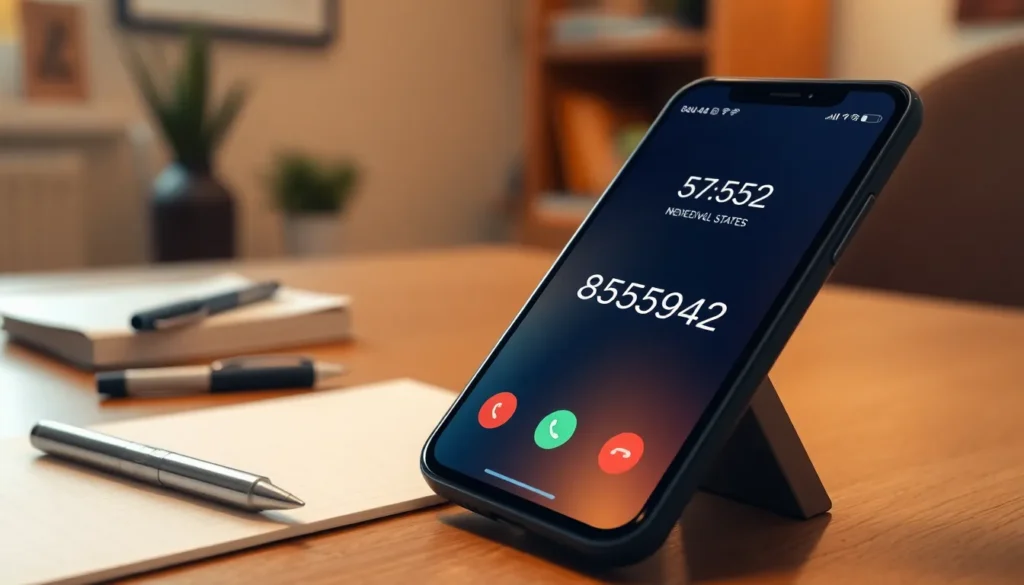Table of Contents
ToggleIn a world where smartphones have become our trusty sidekicks, mobile banking apps are taking center stage. They promise convenience, speed, and the ability to transfer money faster than you can say “where’s my wallet?” But with great power comes great responsibility—or at least, a few questions about safety.
Are these apps secure enough to protect hard-earned cash from sneaky hackers and digital pickpockets? With stories of identity theft and data breaches making headlines, it’s only natural to wonder if tapping “pay” is a leap of faith or a smart move. Buckle up as we dive into the world of mobile banking security, separating fact from fiction and helping users navigate their financial future with confidence.
Understanding Mobile Banking Apps
Mobile banking apps serve as digital platforms that enable users to conduct financial transactions using smartphones. These applications combine convenience with essential banking services, allowing users to access their accounts anytime and anywhere.
Definition of Mobile Banking Apps
Mobile banking apps are software applications specifically designed for smartphones and tablets. Users enjoy features such as checking account balances, transferring funds, paying bills, and depositing checks. Security measures like encryption and two-factor authentication enhance user safety. Financial institutions develop these apps to facilitate on-the-go banking, making everyday transactions more accessible for users. Each application typically connects securely to the bank’s systems, ensuring a seamless experience while safeguarding sensitive information.
Popular Mobile Banking Apps
Several mobile banking apps dominate the market today. Examples include Chase Mobile, Bank of America, and Wells Fargo Mobile. These apps offer robust features such as account management, mobile deposits, bill payments, and budgeting tools. Additionally, apps like Venmo and PayPal provide peer-to-peer payment options, simplifying transactions between users. Overall, numerous financial institutions provide mobile banking solutions tailored to meet various user preferences and needs, driving the growth of mobile banking in daily financial activities.
Security Features of Mobile Banking Apps

Mobile banking apps prioritize user security through various advanced features. Enhancing protection primarily involves encryption methods and two-factor authentication.
Encryption Methods
Encryption methods secure sensitive information by transforming data into unreadable formats. Most mobile banking apps utilize AES (Advanced Encryption Standard) for strong data protection. This protocol encrypts user data in transit and when stored on servers. Banks and financial institutions often follow best practices, ensuring encrypted connections with HTTPS for added security. Users can feel confident knowing their personal and financial information is safeguarded with robust encryption algorithms.
Two-Factor Authentication
Two-factor authentication (2FA) adds an extra layer of security during the login process. Users provide something they know, like a password, and something they possess, such as a smartphone. Many mobile banking apps send one-time codes via SMS or email for additional verification. Should a user’s password be compromised, 2FA can prevent unauthorized access. This method significantly reduces the risk of identity theft and fraud, making it a vital feature in mobile banking app security.
Risks Associated with Mobile Banking Apps
Mobile banking apps expose users to several risks. Understanding these threats helps improve user safety.
Common Threats
Malware remains a significant concern for mobile banking users. Cybercriminals use this software to steal personal and financial information, often without user awareness. Phishing attacks also pose serious risks, where fraudsters trick users into revealing sensitive information through fake websites or messages. Unsecured Wi-Fi connections can further increase vulnerability, allowing hackers to intercept sensitive data during transactions. Users must stay cautious about app permissions, as some applications request excessive access to sensitive information. Regularly updating apps and devices helps mitigate these risks, strengthening overall security.
User Error Vulnerabilities
User errors significantly contribute to mobile banking risks. Weak passwords without complexity can lead to unauthorized access to accounts. Falling for phishing scams often stems from users neglecting to verify the authenticity of messages or links. Careless sharing of personal information on social media increases exposure to potential fraud. Forgetting to log out of banking apps on shared devices leaves accounts open for misuse. Screen lock features should get activated, preventing unwanted access when devices are lost or stolen. Raising awareness about these vulnerabilities enhances user security and helps protect financial assets.
Best Practices for Safe Mobile Banking
Prioritizing security is essential for a safe mobile banking experience. Following best practices can greatly reduce risks.
Regular Software Updates
Keeping apps and devices updated is crucial for maintaining security. Updates often include patches that fix vulnerabilities and strengthen defenses against new threats. Users should enable automatic updates wherever possible. Whenever a new version is available, it addresses known security issues and enhances overall app functionality. In addition, updating the operating system regularly further protects against potential exploits. Regular updates can significantly decrease the likelihood of falling victim to cyberattacks.
Strong Password Management
Building strong passwords is vital for safeguarding mobile banking accounts. Passwords should comprise a mix of uppercase, lowercase, numbers, and special characters. Regularly changing passwords also adds a layer of protection. Avoid using easily guessable information, like birthdays or common words. Users can benefit from utilizing password managers to generate and store complex passwords securely. Multi-factor authentication further secures accounts by requiring a second verification step. Through diligent password management, users can effectively shield their financial data from unauthorized access.
Mobile banking apps have revolutionized how individuals manage their finances. While they offer unmatched convenience and efficiency, users must remain vigilant about security. Employing strong passwords and enabling two-factor authentication can significantly enhance protection against potential threats.
Staying informed about the latest security features and best practices is essential for safe mobile banking. By taking proactive steps to secure their accounts, users can enjoy the benefits of mobile banking while minimizing risks. Ultimately, a cautious approach combined with robust security measures can make mobile banking both safe and efficient.




